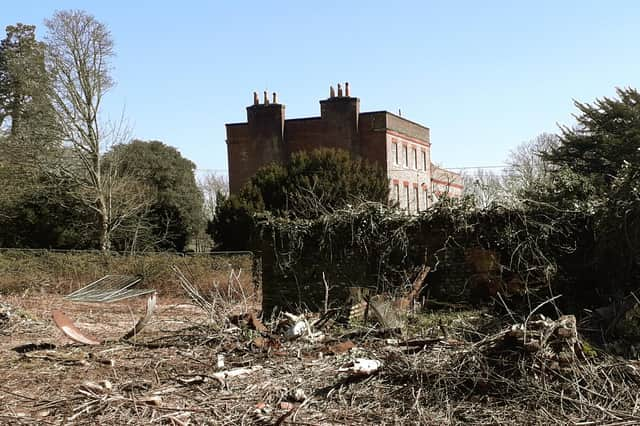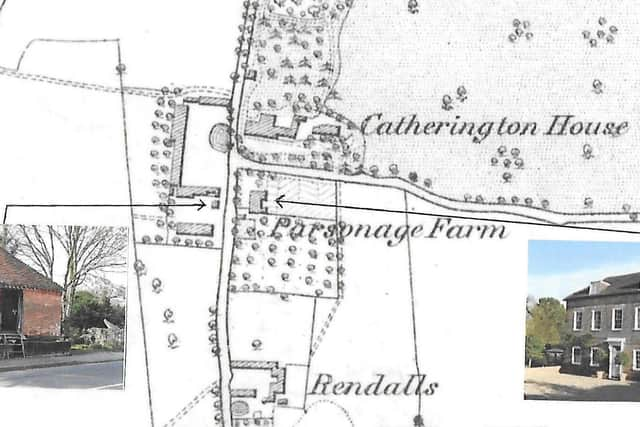Newly-discovered farm ruins belonged to a sneaky admiral | Nostalgia


The clearance of dense undergrowth and trees to the west of Catherington Lane opposite Catherington House (now Kingscourt School and once the family home of Admiral Samuel Hood mentor to Nelson) in the village of Catherington, has revealed the ruins of old farm buildings that have not been seen for many years.
Mike says: ‘The complex of ruins were part of the extensive Parsonage Farm and the farm buildings were thought to consist of a large timber and thatched Tithe Barn and other outbuildings (a pond would have completed the idyllic scene). The map here (circa 1870) shows Catherington Lane in the centre running north/south with the ruins opposite Five Heads Road joining from the east.
Advertisement
Hide AdAdvertisement
Hide Ad‘In the early 19th century Parsonage Farm was owned and operated by the Curtis family. It also comprised the existing farmhouse (now called ‘The Farmhouse’- see insert on the 1870 map), with farmland stretching as far west as Ham Lane. All that remains of this farm is a derelict shed to the north. The ownership of this farm to Admiral Sir Roger Curtis is detailed on the Catherington Enclosure Awards map from 1816.’


Mike adds: ‘Sir Roger Curtis was an admiral in the 19th century and in his early career was Flag Captain to Admiral Lord Howe on board the flagship Eagle 64. Although Sir Roger had a distinguished naval career and was a favourite protégé of Admiral Lord Howe, the normally reticent Vice-Admiral Lord Collingwood noted some perceived personality flaws and described him as ‘an artful sneaking creature, whose frowning, insinuating manners creep into the confidence of whoever he attacks, and whose rapacity would grasp all honours and profits that come within his view’. A full-blooded character assassination indeed and fortunately during my Royal Navy/MOD (N) career, I managed to avoid senior management with similar personality traits. Sir Roger and other members of the Curtis family are commemorated on wall tablets in All Saints’ Church, Catherington.’
n Barry Cox and I differ about the exact location in Lawrence Road, Southsea, this photograph was taken. We can’t even agree if we are looking north or south. Can you help? The photograph was taken between 1910 and 1914.
The tram is on interlaced track, peculiar to Portsmouth because of its narrow streets. It also enabled track to run without points. In the top right corner is the roof of a building with a chimney which might help identify the location.
A message from the editor, Mark Waldron. You can subscribe here for unlimited access to our online coverage, including Pompey, for 27p a day.
Comment Guidelines
National World encourages reader discussion on our stories. User feedback, insights and back-and-forth exchanges add a rich layer of context to reporting. Please review our Community Guidelines before commenting.